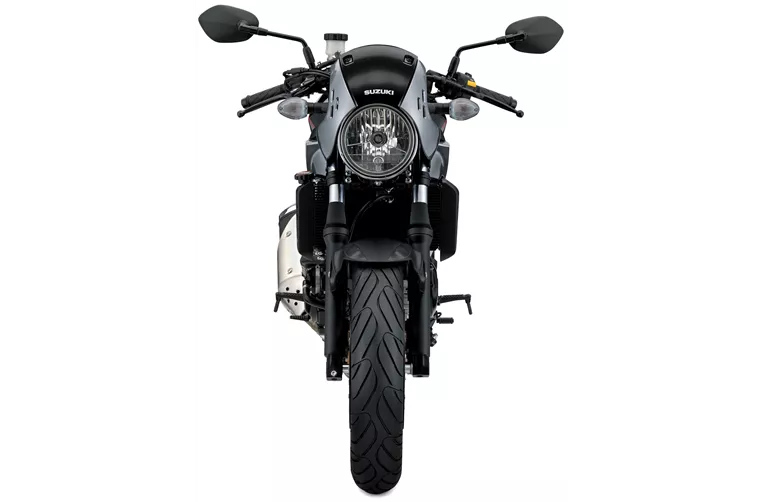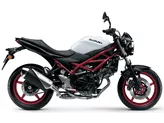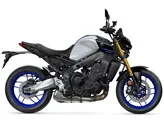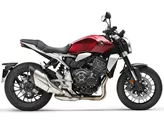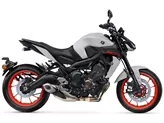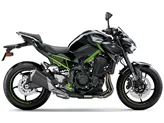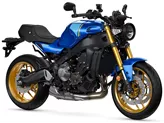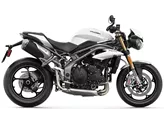Suzuki SV650X 2018 vs. Yamaha MT-09 2017
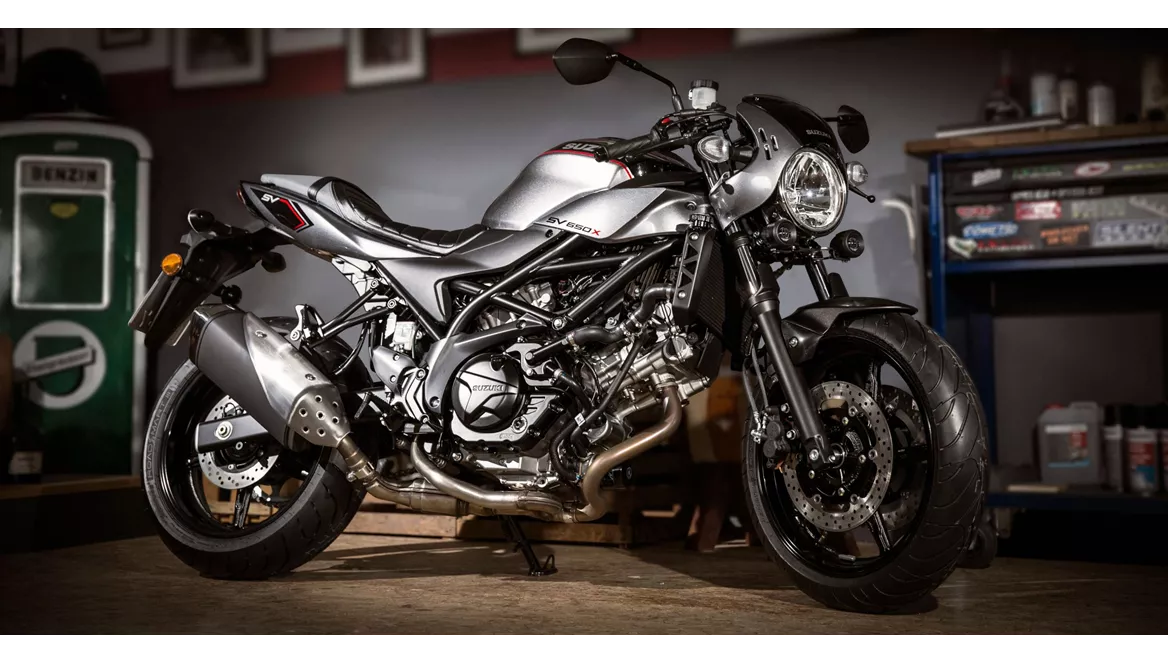
Suzuki SV650X 2018

Yamaha MT-09 2017
Overview - Suzuki SV650X 2018 vs Yamaha MT-09 2017
In terms of engine and drive train, the Suzuki SV650X 2018 is equipped with a V2 engine that produces 76 horsepower and 64 Nm of torque. On the other hand, the Yamaha MT-09 2017 features an in-line three-cylinder engine that delivers a higher power output of 115 horsepower and 87.5 Nm of torque. Both bikes have fuel injection systems and liquid cooling.
In terms of suspension, both bikes have swing arm rear suspension and monoshock absorbers. However, the Suzuki SV650X 2018 has a telescopic fork front suspension, while the Yamaha MT-09 2017 features an upside-down telescopic fork front suspension. This difference in front suspension design may affect the handling and performance of the bikes.
In terms of chassis, the Suzuki SV650X 2018 has a steel frame, while the Yamaha MT-09 2017 features an aluminum frame. The Yamaha's aluminum frame may provide better rigidity and stability compared to the Suzuki's steel frame.
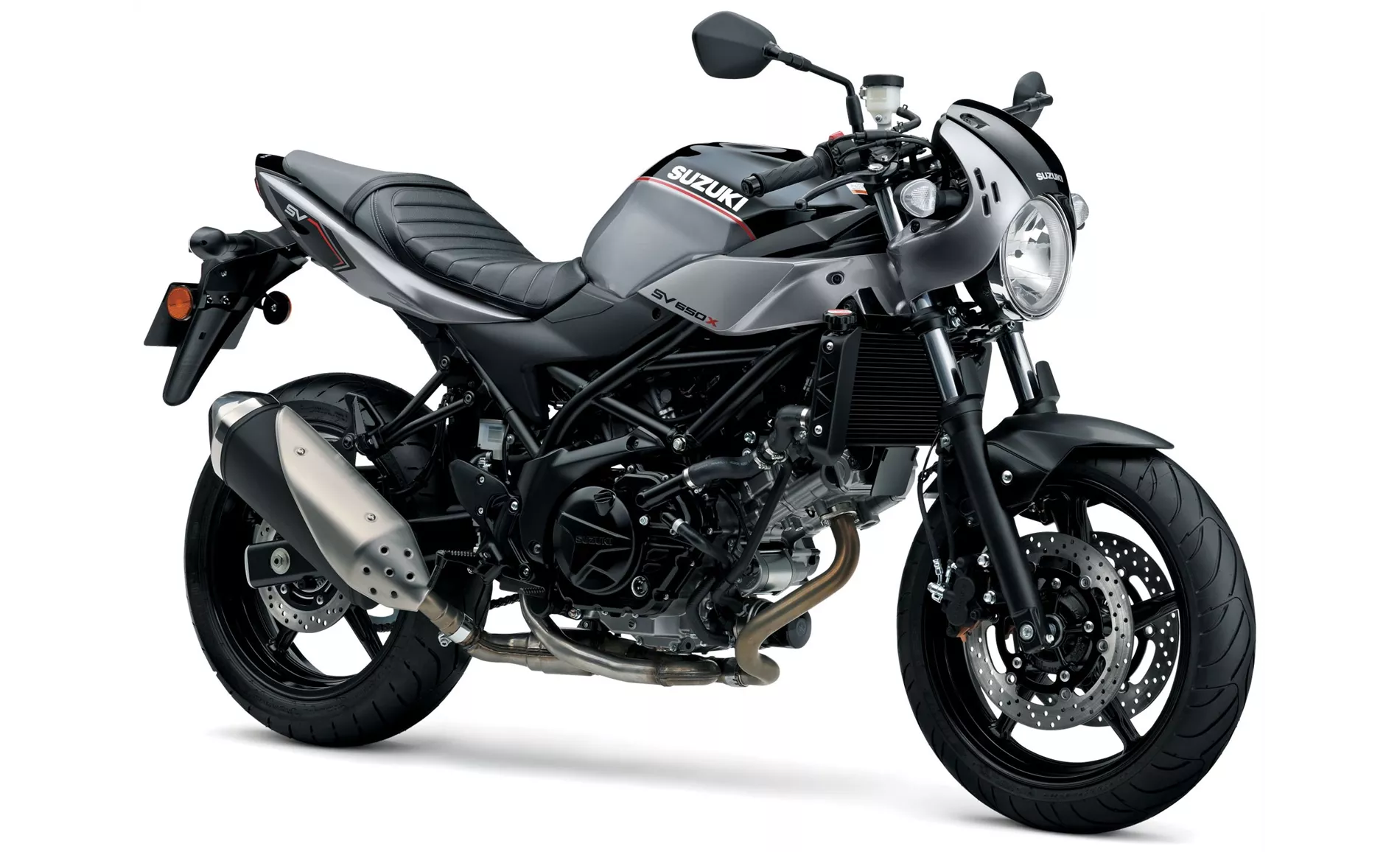
Suzuki SV650X 2018
Both bikes have double disk front brakes, but the Yamaha MT-09 2017 has a slightly larger front brake diameter of 298mm compared to the Suzuki SV650X 2018's 290mm. Additionally, the Yamaha MT-09 2017 comes with advanced rider assistance systems such as ABS, quickshifter, and traction control, while the Suzuki SV650X 2018 only has ABS.
In terms of dimensions and weights, both bikes have 17-inch front and rear tires. The Yamaha MT-09 2017 has a wider rear tire width of 180mm compared to the Suzuki SV650X 2018's 160mm. The wheelbase of both bikes is similar, with the Suzuki having a slightly longer wheelbase of 1445mm compared to the Yamaha's 1440mm. The seat height of the Yamaha MT-09 2017 is also higher at 815mm compared to the Suzuki SV650X 2018's 785mm. Both bikes have similar kerb weights, with the Yamaha weighing slightly less at 193kg compared to the Suzuki's 197kg. The fuel tank capacity of the Yamaha is also slightly larger at 14 liters compared to the Suzuki's 13.8 liters.
In terms of strengths, the Suzuki SV650X 2018 is praised for its agile and lively V2 engine, easy handling, and pleasant seating position with a low saddle height. It is also commended for its successful gear graduation and low weight.

Yamaha MT-09 2017
On the other hand, the Yamaha MT-09 2017 is praised for its Öhlins suspension, which is considered an extreme enrichment. The bike's Akrapovic exhaust system enhances both its optics and sound. The Magura HC3 radial brake pump is also highly regarded, and the Carbon2Race covers offer grandiose optics. The combination of the seat, footrests, and handlebar clamps is also considered very effective.
In terms of weaknesses, the Suzuki SV650X 2018 is criticized for its inconspicuous appearance and telescopic fork that is considered too soft. It also lacks an anti-hopping clutch.
The Yamaha MT-09 2017's weaknesses include the financial outlay required for certain modifications, the need for registration of certain parts, and the fact that the ECU flash is not road legal.
Technical Specifications Suzuki SV650X 2018 compared to Yamaha MT-09 2017
Pros and Cons in comparison
Pros and Cons in comparison
Suzuki SV650X 2018

Retro is trendy, retro is cool. The people at Suzuki have also recognised this, and although they are not launching many new products for 2018, they are launching a really cool one - the SV650X. Not much had to be changed to place it in the ranks of modern cafe racers: Headlight fairing, paintwork, side panels, saddle and low handlebar ends are enough for the great result. Above all, the front-wheel-oriented seating position suits it well, but does not make it significantly more uncomfortable. The suspension can only be adjusted at the rear, but the lively engine is a blast and the price is right.
Yamaha MT-09 2017

In conclusion, after several stops throughout the season, I can look back on a great result. Both in terms of performance and looks, our MT-09 is perfect. The suspension was probably our most important issue. Where before there was clearly (too much) movement in the rear in fast corners, now it is ironed over without batting an eyelid. The STX 46 shock absorber is quite stiff in its basic configuration, but also manages to get through everyday life without being uncomfortable. Thanks to generous adjustment options, there is still room for individual preferences and uses. The function of the NIX 30 cartridge is also impressive. The response behaviour - especially under load - has improved significantly. There is now also much more reserve available when braking. Where before the fork went into block and the ABS triggered when braking hard with the original set-up, now the brakes simply continue to work effectively. In addition, the MT-09 now follows the intended line in the curve radius as if by itself - a pure pleasure. The sight and sound of the Akrapovic complete system are also pure joy, and the fact that it produces a few more horsepower is felt effectively, especially in the upper third of the rev range. The front wheel shoots even more willingly into the gallery in 2nd and 3rd gear.
Price Comparison Avarage Market Price Suzuki SV650X vs Yamaha MT-09
There are a few key differences between a Suzuki SV650X 2018 and a Yamaha MT-09 2017. It takes less time to sell a Yamaha MT-09 with 73 days compared to 178 days for the Suzuki SV650X. Since model year 2018 1000PS.de editors have written 5 reviews for the Suzuki SV650X and 57 reviews for the Yamaha MT-09 since model year 2013. The first review for the Suzuki SV650X was published on 07/11/2017 and now has more than 36,800 views. This compares to more than 39,900 views for the first review on Yamaha MT-09 published on 10/06/2013.
